- Tea Infuser Market By Type (USD Billion, 2019-2035)
- Mesh Infuser
- Silicone Infuser
- Stainless Steel Infuser
- Ceramic Infuser
- Tea Infuser Market By Material (USD Billion, 2019-2035)
- Stainless Steel
- Plastic
- Silicone
- Ceramic
- Tea Infuser Market By Distribution Channel (USD Billion, 2019-2035)
- Online Retail
- Supermarkets
- Specialty Stores
- Department Stores
- Tea Infuser Market By End Use (USD Billion, 2019-2035)
- Household
- Commercial
- Events
- Tea Infuser Market By Regional (USD Billion, 2019-2035)
- North America
- Europe
- South America
- Asia Pacific
- Middle East and Africa
North America Outlook (USD Billion, 2019-2035)
North America Tea Infuser Market by Type
Mesh Infuser
Silicone Infuser
Stainless Steel Infuser
Ceramic Infuser
North America Tea Infuser Market by Material Type
Stainless Steel
Plastic
Silicone
Ceramic
North America Tea Infuser Market by Distribution Channel Type
Online Retail
Supermarkets
Specialty Stores
Department Stores
North America Tea Infuser Market by End Use Type
Household
Commercial
Events
North America Tea Infuser Market by Regional Type
US
Canada
US Outlook (USD Billion, 2019-2035)
US Tea Infuser Market by Type
Mesh Infuser
Silicone Infuser
Stainless Steel Infuser
Ceramic Infuser
US Tea Infuser Market by Material Type
Stainless Steel
Plastic
Silicone
Ceramic
US Tea Infuser Market by Distribution Channel Type
Online Retail
Supermarkets
Specialty Stores
Department Stores
US Tea Infuser Market by End Use Type
Household
Commercial
Events
CANADA Outlook (USD Billion, 2019-2035)
CANADA Tea Infuser Market by Type
Mesh Infuser
Silicone Infuser
Stainless Steel Infuser
Ceramic Infuser
CANADA Tea Infuser Market by Material Type
Stainless Steel
Plastic
Silicone
Ceramic
CANADA Tea Infuser Market by Distribution Channel Type
Online Retail
Supermarkets
Specialty Stores
Department Stores
CANADA Tea Infuser Market by End Use Type
Household
Commercial
Events
Europe Outlook (USD Billion, 2019-2035)
Europe Tea Infuser Market by Type
Mesh Infuser
Silicone Infuser
Stainless Steel Infuser
Ceramic Infuser
Europe Tea Infuser Market by Material Type
Stainless Steel
Plastic
Silicone
Ceramic
Europe Tea Infuser Market by Distribution Channel Type
Online Retail
Supermarkets
Specialty Stores
Department Stores
Europe Tea Infuser Market by End Use Type
Household
Commercial
Events
Europe Tea Infuser Market by Regional Type
Germany
UK
France
Russia
Italy
Spain
Rest of Europe
GERMANY Outlook (USD Billion, 2019-2035)
GERMANY Tea Infuser Market by Type
Mesh Infuser
Silicone Infuser
Stainless Steel Infuser
Ceramic Infuser
GERMANY Tea Infuser Market by Material Type
Stainless Steel
Plastic
Silicone
Ceramic
GERMANY Tea Infuser Market by Distribution Channel Type
Online Retail
Supermarkets
Specialty Stores
Department Stores
GERMANY Tea Infuser Market by End Use Type
Household
Commercial
Events
UK Outlook (USD Billion, 2019-2035)
UK Tea Infuser Market by Type
Mesh Infuser
Silicone Infuser
Stainless Steel Infuser
Ceramic Infuser
UK Tea Infuser Market by Material Type
Stainless Steel
Plastic
Silicone
Ceramic
UK Tea Infuser Market by Distribution Channel Type
Online Retail
Supermarkets
Specialty Stores
Department Stores
UK Tea Infuser Market by End Use Type
Household
Commercial
Events
FRANCE Outlook (USD Billion, 2019-2035)
FRANCE Tea Infuser Market by Type
Mesh Infuser
Silicone Infuser
Stainless Steel Infuser
Ceramic Infuser
FRANCE Tea Infuser Market by Material Type
Stainless Steel
Plastic
Silicone
Ceramic
FRANCE Tea Infuser Market by Distribution Channel Type
Online Retail
Supermarkets
Specialty Stores
Department Stores
FRANCE Tea Infuser Market by End Use Type
Household
Commercial
Events
RUSSIA Outlook (USD Billion, 2019-2035)
RUSSIA Tea Infuser Market by Type
Mesh Infuser
Silicone Infuser
Stainless Steel Infuser
Ceramic Infuser
RUSSIA Tea Infuser Market by Material Type
Stainless Steel
Plastic
Silicone
Ceramic
RUSSIA Tea Infuser Market by Distribution Channel Type
Online Retail
Supermarkets
Specialty Stores
Department Stores
RUSSIA Tea Infuser Market by End Use Type
Household
Commercial
Events
ITALY Outlook (USD Billion, 2019-2035)
ITALY Tea Infuser Market by Type
Mesh Infuser
Silicone Infuser
Stainless Steel Infuser
Ceramic Infuser
ITALY Tea Infuser Market by Material Type
Stainless Steel
Plastic
Silicone
Ceramic
ITALY Tea Infuser Market by Distribution Channel Type
Online Retail
Supermarkets
Specialty Stores
Department Stores
ITALY Tea Infuser Market by End Use Type
Household
Commercial
Events
SPAIN Outlook (USD Billion, 2019-2035)
SPAIN Tea Infuser Market by Type
Mesh Infuser
Silicone Infuser
Stainless Steel Infuser
Ceramic Infuser
SPAIN Tea Infuser Market by Material Type
Stainless Steel
Plastic
Silicone
Ceramic
SPAIN Tea Infuser Market by Distribution Channel Type
Online Retail
Supermarkets
Specialty Stores
Department Stores
SPAIN Tea Infuser Market by End Use Type
Household
Commercial
Events
REST OF EUROPE Outlook (USD Billion, 2019-2035)
REST OF EUROPE Tea Infuser Market by Type
Mesh Infuser
Silicone Infuser
Stainless Steel Infuser
Ceramic Infuser
REST OF EUROPE Tea Infuser Market by Material Type
Stainless Steel
Plastic
Silicone
Ceramic
REST OF EUROPE Tea Infuser Market by Distribution Channel Type
Online Retail
Supermarkets
Specialty Stores
Department Stores
REST OF EUROPE Tea Infuser Market by End Use Type
Household
Commercial
Events
APAC Outlook (USD Billion, 2019-2035)
APAC Tea Infuser Market by Type
Mesh Infuser
Silicone Infuser
Stainless Steel Infuser
Ceramic Infuser
APAC Tea Infuser Market by Material Type
Stainless Steel
Plastic
Silicone
Ceramic
APAC Tea Infuser Market by Distribution Channel Type
Online Retail
Supermarkets
Specialty Stores
Department Stores
APAC Tea Infuser Market by End Use Type
Household
Commercial
Events
APAC Tea Infuser Market by Regional Type
China
India
Japan
South Korea
Malaysia
Thailand
Indonesia
Rest of APAC
CHINA Outlook (USD Billion, 2019-2035)
CHINA Tea Infuser Market by Type
Mesh Infuser
Silicone Infuser
Stainless Steel Infuser
Ceramic Infuser
CHINA Tea Infuser Market by Material Type
Stainless Steel
Plastic
Silicone
Ceramic
CHINA Tea Infuser Market by Distribution Channel Type
Online Retail
Supermarkets
Specialty Stores
Department Stores
CHINA Tea Infuser Market by End Use Type
Household
Commercial
Events
INDIA Outlook (USD Billion, 2019-2035)
INDIA Tea Infuser Market by Type
Mesh Infuser
Silicone Infuser
Stainless Steel Infuser
Ceramic Infuser
INDIA Tea Infuser Market by Material Type
Stainless Steel
Plastic
Silicone
Ceramic
INDIA Tea Infuser Market by Distribution Channel Type
Online Retail
Supermarkets
Specialty Stores
Department Stores
INDIA Tea Infuser Market by End Use Type
Household
Commercial
Events
JAPAN Outlook (USD Billion, 2019-2035)
JAPAN Tea Infuser Market by Type
Mesh Infuser
Silicone Infuser
Stainless Steel Infuser
Ceramic Infuser
JAPAN Tea Infuser Market by Material Type
Stainless Steel
Plastic
Silicone
Ceramic
JAPAN Tea Infuser Market by Distribution Channel Type
Online Retail
Supermarkets
Specialty Stores
Department Stores
JAPAN Tea Infuser Market by End Use Type
Household
Commercial
Events
SOUTH KOREA Outlook (USD Billion, 2019-2035)
SOUTH KOREA Tea Infuser Market by Type
Mesh Infuser
Silicone Infuser
Stainless Steel Infuser
Ceramic Infuser
SOUTH KOREA Tea Infuser Market by Material Type
Stainless Steel
Plastic
Silicone
Ceramic
SOUTH KOREA Tea Infuser Market by Distribution Channel Type
Online Retail
Supermarkets
Specialty Stores
Department Stores
SOUTH KOREA Tea Infuser Market by End Use Type
Household
Commercial
Events
MALAYSIA Outlook (USD Billion, 2019-2035)
MALAYSIA Tea Infuser Market by Type
Mesh Infuser
Silicone Infuser
Stainless Steel Infuser
Ceramic Infuser
MALAYSIA Tea Infuser Market by Material Type
Stainless Steel
Plastic
Silicone
Ceramic
MALAYSIA Tea Infuser Market by Distribution Channel Type
Online Retail
Supermarkets
Specialty Stores
Department Stores
MALAYSIA Tea Infuser Market by End Use Type
Household
Commercial
Events
THAILAND Outlook (USD Billion, 2019-2035)
THAILAND Tea Infuser Market by Type
Mesh Infuser
Silicone Infuser
Stainless Steel Infuser
Ceramic Infuser
THAILAND Tea Infuser Market by Material Type
Stainless Steel
Plastic
Silicone
Ceramic
THAILAND Tea Infuser Market by Distribution Channel Type
Online Retail
Supermarkets
Specialty Stores
Department Stores
THAILAND Tea Infuser Market by End Use Type
Household
Commercial
Events
INDONESIA Outlook (USD Billion, 2019-2035)
INDONESIA Tea Infuser Market by Type
Mesh Infuser
Silicone Infuser
Stainless Steel Infuser
Ceramic Infuser
INDONESIA Tea Infuser Market by Material Type
Stainless Steel
Plastic
Silicone
Ceramic
INDONESIA Tea Infuser Market by Distribution Channel Type
Online Retail
Supermarkets
Specialty Stores
Department Stores
INDONESIA Tea Infuser Market by End Use Type
Household
Commercial
Events
REST OF APAC Outlook (USD Billion, 2019-2035)
REST OF APAC Tea Infuser Market by Type
Mesh Infuser
Silicone Infuser
Stainless Steel Infuser
Ceramic Infuser
REST OF APAC Tea Infuser Market by Material Type
Stainless Steel
Plastic
Silicone
Ceramic
REST OF APAC Tea Infuser Market by Distribution Channel Type
Online Retail
Supermarkets
Specialty Stores
Department Stores
REST OF APAC Tea Infuser Market by End Use Type
Household
Commercial
Events
South America Outlook (USD Billion, 2019-2035)
South America Tea Infuser Market by Type
Mesh Infuser
Silicone Infuser
Stainless Steel Infuser
Ceramic Infuser
South America Tea Infuser Market by Material Type
Stainless Steel
Plastic
Silicone
Ceramic
South America Tea Infuser Market by Distribution Channel Type
Online Retail
Supermarkets
Specialty Stores
Department Stores
South America Tea Infuser Market by End Use Type
Household
Commercial
Events
South America Tea Infuser Market by Regional Type
Brazil
Mexico
Argentina
Rest of South America
BRAZIL Outlook (USD Billion, 2019-2035)
BRAZIL Tea Infuser Market by Type
Mesh Infuser
Silicone Infuser
Stainless Steel Infuser
Ceramic Infuser
BRAZIL Tea Infuser Market by Material Type
Stainless Steel
Plastic
Silicone
Ceramic
BRAZIL Tea Infuser Market by Distribution Channel Type
Online Retail
Supermarkets
Specialty Stores
Department Stores
BRAZIL Tea Infuser Market by End Use Type
Household
Commercial
Events
MEXICO Outlook (USD Billion, 2019-2035)
MEXICO Tea Infuser Market by Type
Mesh Infuser
Silicone Infuser
Stainless Steel Infuser
Ceramic Infuser
MEXICO Tea Infuser Market by Material Type
Stainless Steel
Plastic
Silicone
Ceramic
MEXICO Tea Infuser Market by Distribution Channel Type
Online Retail
Supermarkets
Specialty Stores
Department Stores
MEXICO Tea Infuser Market by End Use Type
Household
Commercial
Events
ARGENTINA Outlook (USD Billion, 2019-2035)
ARGENTINA Tea Infuser Market by Type
Mesh Infuser
Silicone Infuser
Stainless Steel Infuser
Ceramic Infuser
ARGENTINA Tea Infuser Market by Material Type
Stainless Steel
Plastic
Silicone
Ceramic
ARGENTINA Tea Infuser Market by Distribution Channel Type
Online Retail
Supermarkets
Specialty Stores
Department Stores
ARGENTINA Tea Infuser Market by End Use Type
Household
Commercial
Events
REST OF SOUTH AMERICA Outlook (USD Billion, 2019-2035)
REST OF SOUTH AMERICA Tea Infuser Market by Type
Mesh Infuser
Silicone Infuser
Stainless Steel Infuser
Ceramic Infuser
REST OF SOUTH AMERICA Tea Infuser Market by Material Type
Stainless Steel
Plastic
Silicone
Ceramic
REST OF SOUTH AMERICA Tea Infuser Market by Distribution Channel Type
Online Retail
Supermarkets
Specialty Stores
Department Stores
REST OF SOUTH AMERICA Tea Infuser Market by End Use Type
Household
Commercial
Events
MEA Outlook (USD Billion, 2019-2035)
MEA Tea Infuser Market by Type
Mesh Infuser
Silicone Infuser
Stainless Steel Infuser
Ceramic Infuser
MEA Tea Infuser Market by Material Type
Stainless Steel
Plastic
Silicone
Ceramic
MEA Tea Infuser Market by Distribution Channel Type
Online Retail
Supermarkets
Specialty Stores
Department Stores
MEA Tea Infuser Market by End Use Type
Household
Commercial
Events
MEA Tea Infuser Market by Regional Type
GCC Countries
South Africa
Rest of MEA
GCC COUNTRIES Outlook (USD Billion, 2019-2035)
GCC COUNTRIES Tea Infuser Market by Type
Mesh Infuser
Silicone Infuser
Stainless Steel Infuser
Ceramic Infuser
GCC COUNTRIES Tea Infuser Market by Material Type
Stainless Steel
Plastic
Silicone
Ceramic
GCC COUNTRIES Tea Infuser Market by Distribution Channel Type
Online Retail
Supermarkets
Specialty Stores
Department Stores
GCC COUNTRIES Tea Infuser Market by End Use Type
Household
Commercial
Events
SOUTH AFRICA Outlook (USD Billion, 2019-2035)
SOUTH AFRICA Tea Infuser Market by Type
Mesh Infuser
Silicone Infuser
Stainless Steel Infuser
Ceramic Infuser
SOUTH AFRICA Tea Infuser Market by Material Type
Stainless Steel
Plastic
Silicone
Ceramic
SOUTH AFRICA Tea Infuser Market by Distribution Channel Type
Online Retail
Supermarkets
Specialty Stores
Department Stores
SOUTH AFRICA Tea Infuser Market by End Use Type
Household
Commercial
Events
REST OF MEA Outlook (USD Billion, 2019-2035)
REST OF MEA Tea Infuser Market by Type
Mesh Infuser
Silicone Infuser
Stainless Steel Infuser
Ceramic Infuser
REST OF MEA Tea Infuser Market by Material Type
Stainless Steel
Plastic
Silicone
Ceramic
REST OF MEA Tea Infuser Market by Distribution Channel Type
Online Retail
Supermarkets
Specialty Stores
Department Stores
REST OF MEA Tea Infuser Market by End Use Type
Household
Commercial
Events

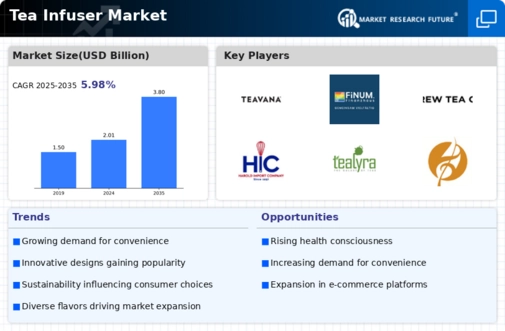
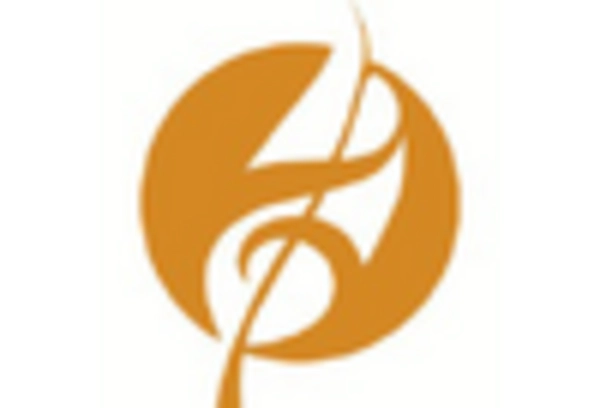
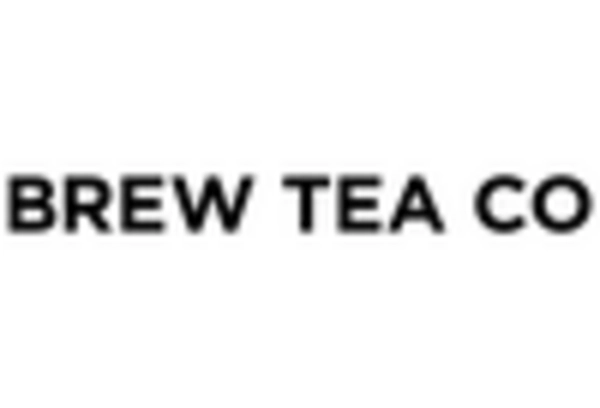
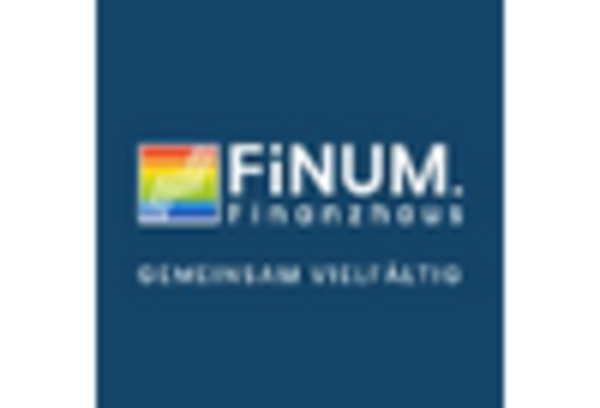
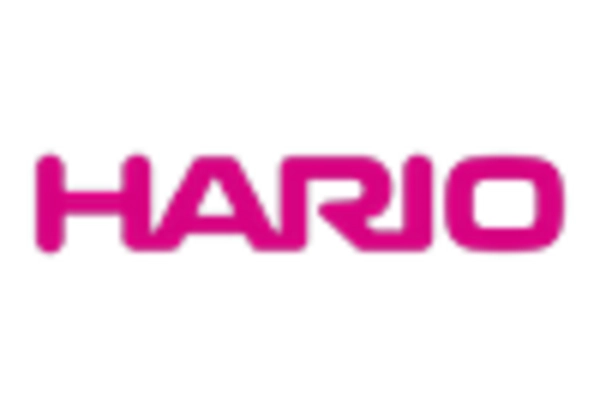
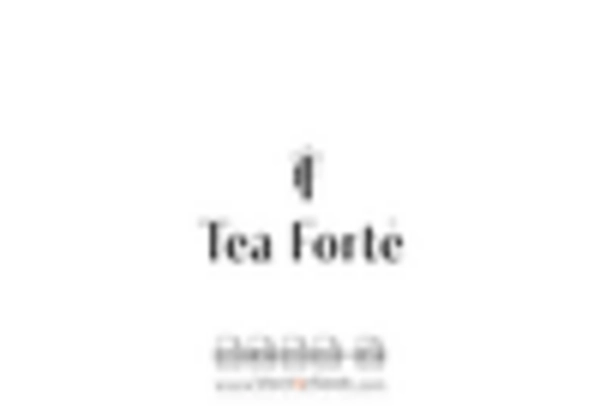
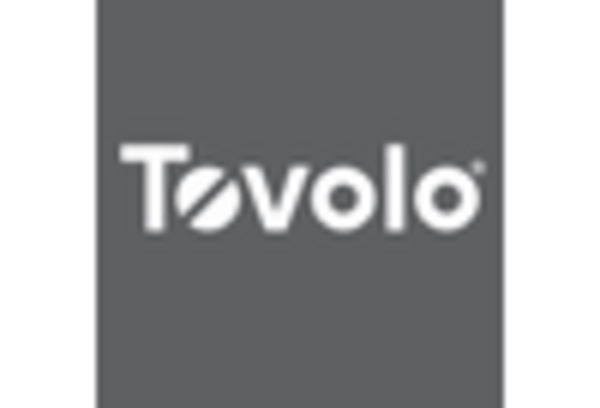









Leave a Comment